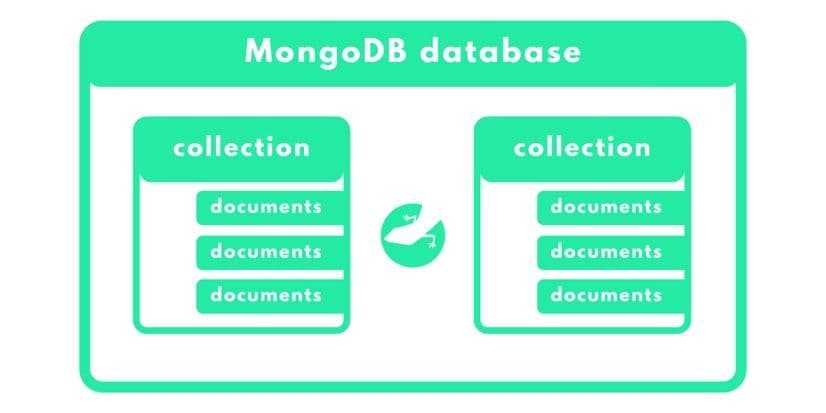software development
app development
+ 2 more ...
Lizard Global's Tech Stack: MongoDB
24 Dec 2020
by Lotte, Digital Content Specialist
24 Dec 2020
by Lotte, Digital Content Specialist
software development
app development
technology stack
mongodb
Lizard Global's Tech Stack: MongoDB
Table of contents
Contact us
We will get back to you in the next 48 hours.

MongoDB is an open-source and highly scalable database and part of the MERN tech stack set we’re using at Lizard Global.
In our article on technology stacks you can read about the benefits of picking the right technologies for your development project. This blog dives a bit deeper into the tech stack we use at Lizard Global: MERN. Specifically, we take a look at MongoDB, an open-source, cross-platform, and object-oriented database program for web/app developers.
What is MongoDB?
As mentioned above, MongoDB is used as a database in the app development process. It’s a program designed to store large amounts of data, and provides official driver support for all popular languages such as C, C++, Java, Node.js, Swift, and much more. So, no matter what type of app you create, from cross-platform and progressive web apps to native mobile apps, MongoDB is made in such a way that it works with a broad range of languages.
At Lizard Global, we work with different types of applications, for different devices and operating systems. Using MongoDB allows us to easily and efficiently work with different programming languages in one single database. The flexibility in code in combination with the power to handle large amounts of data are the reasons why we, as well as big companies such as Facebook, Google, Adobe, and many more use MongoDB as their go-to database.
How does MongoDB work?
MongoDB is a database server, which means that the MongoDB environment provides developers with a server on which they can create multiple databases. MongoDB falls under the category of “NoSQL'' databases. This means that the data is stored in the form of collections and documents, rather than tables, which is the case with SQL databases. Some examples of features that make MongoDB a steady part of our technology stack are:
- Document-oriented nature
: MongoDB stores all data in documents instead of tables. The data in these documents are stored in “fields” instead of rows and columns, which makes the data much more flexible.
- Multi-purpose
: MongoDB is a schema-less database. This means that a single collection can hold multiple documents consisting of different types of content. This allows developers to be much more flexible in the code they’re deploying.
- Indexing
: MongoDB indexes data using primary and secondary indices, which makes it easier to search and find data in bigger datasets. Un-indexed data is much more difficult to search as it costs a significant amount of time and effort.
- Scalable
: MongoDB provides so-called horizontal scalability using the method of ‘sharding’, which means that data is distributed on multiple servers and larger amounts of data are parted into smaller data packages using a ‘shard key’. These smaller packages are evenly distributed across different shards on multiple servers. This data distribution makes MongoDB suitable for potential future growth and scaling.
- Replications
: MongoDB creates multiple copies of its data and distributes these copies to a different server. In the case of breakdown of one server, the data is still safe and sound in the form of a copy on another server.
- High-performance
: MongoDB is designed to deliver high performance and data persistence compared to other databases. This persistence is made possible by its scalability, the functionality of indexing, replication, and much more.
Looking at the items listed above, MongoDB offers quite a lot of beneficial functionalities. Not only does it provide a lot of flexibility for developers, it also contains heterogeneous data, provides high performance, availability, and scalability, which are essential for the development of cutting-edge and high-quality applications.

MongoDB at Lizard Global
At Lizard Global, we usually recommend using the MERN technology stack for products, of which MongoDB is our go-to database. Because we develop a broad range of different types of apps, from native mobile apps and progressive web apps to hybrid & cross-platform applications, we do it all. In order to keep our workflows running smoothly, we pick technologies that support multiple types of toolkits and programming languages, as well as high-level scalability.
At Lizard Global, we are using MongoDB with Node.js as a backend service provider for our front-end application. Node is responsible for managing data mutation on MongoDB and MongoDB itself is responsible for keeping our client data secure within its collection and documents.
Need a hand?
Do you want to know more about MongoDB or other technologies we use at Lizard Global to provide our customers with high-end and cutting-edge applications? Get in touch with one of our experts, and let’s meet up to talk about your innovative app ideas! Reach out to us on our social media channels, send a quick WhatsApp message, or give us a call!

MongoDB is an open-source and highly scalable database and part of the MERN tech stack set we’re using at Lizard Global.
In our article on technology stacks you can read about the benefits of picking the right technologies for your development project. This blog dives a bit deeper into the tech stack we use at Lizard Global: MERN. Specifically, we take a look at MongoDB, an open-source, cross-platform, and object-oriented database program for web/app developers.
What is MongoDB?
As mentioned above, MongoDB is used as a database in the app development process. It’s a program designed to store large amounts of data, and provides official driver support for all popular languages such as C, C++, Java, Node.js, Swift, and much more. So, no matter what type of app you create, from cross-platform and progressive web apps to native mobile apps, MongoDB is made in such a way that it works with a broad range of languages.
At Lizard Global, we work with different types of applications, for different devices and operating systems. Using MongoDB allows us to easily and efficiently work with different programming languages in one single database. The flexibility in code in combination with the power to handle large amounts of data are the reasons why we, as well as big companies such as Facebook, Google, Adobe, and many more use MongoDB as their go-to database.
How does MongoDB work?
MongoDB is a database server, which means that the MongoDB environment provides developers with a server on which they can create multiple databases. MongoDB falls under the category of “NoSQL'' databases. This means that the data is stored in the form of collections and documents, rather than tables, which is the case with SQL databases. Some examples of features that make MongoDB a steady part of our technology stack are:
- Document-oriented nature
: MongoDB stores all data in documents instead of tables. The data in these documents are stored in “fields” instead of rows and columns, which makes the data much more flexible.
- Multi-purpose
: MongoDB is a schema-less database. This means that a single collection can hold multiple documents consisting of different types of content. This allows developers to be much more flexible in the code they’re deploying.
- Indexing
: MongoDB indexes data using primary and secondary indices, which makes it easier to search and find data in bigger datasets. Un-indexed data is much more difficult to search as it costs a significant amount of time and effort.
- Scalable
: MongoDB provides so-called horizontal scalability using the method of ‘sharding’, which means that data is distributed on multiple servers and larger amounts of data are parted into smaller data packages using a ‘shard key’. These smaller packages are evenly distributed across different shards on multiple servers. This data distribution makes MongoDB suitable for potential future growth and scaling.
- Replications
: MongoDB creates multiple copies of its data and distributes these copies to a different server. In the case of breakdown of one server, the data is still safe and sound in the form of a copy on another server.
- High-performance
: MongoDB is designed to deliver high performance and data persistence compared to other databases. This persistence is made possible by its scalability, the functionality of indexing, replication, and much more.
Looking at the items listed above, MongoDB offers quite a lot of beneficial functionalities. Not only does it provide a lot of flexibility for developers, it also contains heterogeneous data, provides high performance, availability, and scalability, which are essential for the development of cutting-edge and high-quality applications.

MongoDB at Lizard Global
At Lizard Global, we usually recommend using the MERN technology stack for products, of which MongoDB is our go-to database. Because we develop a broad range of different types of apps, from native mobile apps and progressive web apps to hybrid & cross-platform applications, we do it all. In order to keep our workflows running smoothly, we pick technologies that support multiple types of toolkits and programming languages, as well as high-level scalability.
At Lizard Global, we are using MongoDB with Node.js as a backend service provider for our front-end application. Node is responsible for managing data mutation on MongoDB and MongoDB itself is responsible for keeping our client data secure within its collection and documents.
Need a hand?
Do you want to know more about MongoDB or other technologies we use at Lizard Global to provide our customers with high-end and cutting-edge applications? Get in touch with one of our experts, and let’s meet up to talk about your innovative app ideas! Reach out to us on our social media channels, send a quick WhatsApp message, or give us a call!







